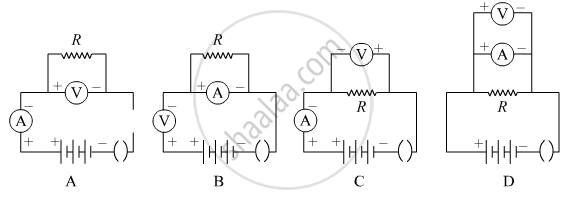Advertisements
Advertisements
Question
Exercise.
Calculate the amount of charge that would flow in 2 hours through an element of an electric bulb drawing a current of 2.5 A.
Solution
Given: Time ‘t’ = 2 hours = 2 × 60 × 60s
t = 7200s
I = 2.5A
Amount of charge, Q = I × t
= 2.5 × 7200
Q = 18000C
APPEARS IN
RELATED QUESTIONS
State the relation between potential difference, work done and charge moved.
The p.d. across a lamp is 12 V. How many joules of electrical energy are changed into heat and light when:
a charge of 1 C passes through it?
Calculate the power used in the 2 Ω resistor in each of the following circuits: a 4 V battery in parallel with 12 Ω and 2 Ω resistors.
How does the resistance of a metallic wire depend on its temperature? Explain with reason.
What would you suggest to a student if while performing an experiment he finds that the pointer/needle of the ammeter and voltmeter do not coincide with the zero marks on the scales when the circuit is open? No extra ammeter/voltmeter is available in the laboratory.
Which one of the following is the correct set-up for studying the dependence of the current on the potential difference across a resistor and why?

A current of 0.2 A flows through a conducting wire for 5 minutes. How much charge will flow?
A current of 1 ampere flows in a series circuit containing an electric lamp and a conductor of 5 Ω when connected to a 10 V battery. Calculate the resistance of the electric lamp.
Now if a resistance of 10 Ω is connected in parallel with this series combination, what change (if any) in current flowing through 5 Ω conductor and potential difference across the lamp will take place? Give reason.
Find out the following in the electric circuit given in Figure
- Effective resistance of two 8 Ω resistors in the combination
- Current flowing through 4 Ω resistor
- Potential difference across 4 Ω resistance
- Power dissipated in 4 Ω resistor
- Difference in ammeter readings, if any.

Study the following circuit and find:

- Effective resistance of the circuit
- Current drawn from the battery
- Potential difference across the 5 omega resistor
